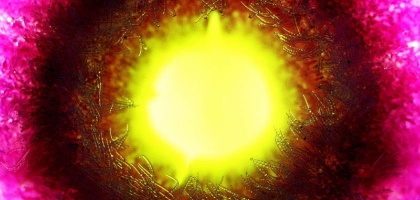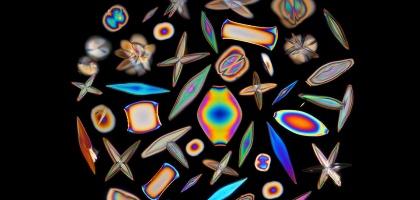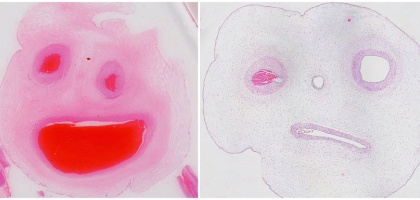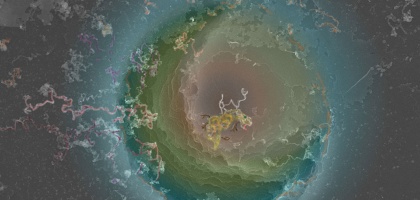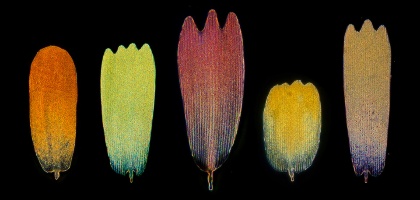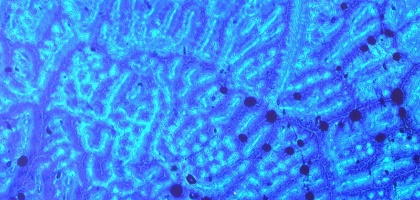崎嶇搜主題
自然中的皺褶型態相當普遍且容易觀察。以不同尺度層級出現在生活中,大至地球表面的山脈褶皺,小至皮膚組織的皺褶細紋。這些表面皺褶紋路形成的主要原因是上、下軟硬質層間的應力不平衡,在山脈褶皺和皺褶細紋中都有著這個共同現象:下層較軟的地函和真皮層,因為流動性和物質的流失產生應力,對上層較硬的地殼和表皮作用而產生皺褶。當表面皺褶紋路達微米或奈米尺度時,可以增加物體的表面積,進而增加物體的接觸面積達到吸附效果,如抓取物品的指紋與行走在牆壁的壁虎。具有皺褶結構的表面在吸附黏著上具有極高的應用發展潛力,為了仿生製作出小尺度的皺褶結構,使用兩種不同軟硬程度的高分子材料(PDMS/PLLA),進而技術性的釋放產生應力使表面皺褶圖案化,透過共軛焦雷射掃描拍攝表面結構,得到自發且高有序的微米尺度皺褶。而照片中的漸層顏色是儀器系統本身對皺褶高低差的顯示方式。
Wrinkles are common and easy to observe in nature. They appear on different scales, from mountain ranges to skin. The formation of wrinkles is mainly due to stress imbalances caused by differences in hardness between upper and lower layers. Mountain folds and fine lines on the skin come about due to a shared phenomenon. In the soft lower mantle or dermis, stress results from fluidity and material loss, which acts on the upper layer of hard crust or epidermis to produce wrinkles. When wrinkles reach the order of microns or nanometers, surface and contact areas increase to achieve adsorption effect, such as fingerprints left on objects or geckos climbing walls. Therefore, wrinkled surfaces have a high potential for application due to their adsorptive and adhesive properties. To produce a small-scale wrinkled structure based on bionic design methods, two polymer materials (PDMS/PLLA) of different hardness were used. The surface was scanned and photographed with laser scanning confocal microscope, to reveal spontaneous and highly-ordered folds on the order of microns. The color gradient is how the differences in the heights of the folds are displayed.
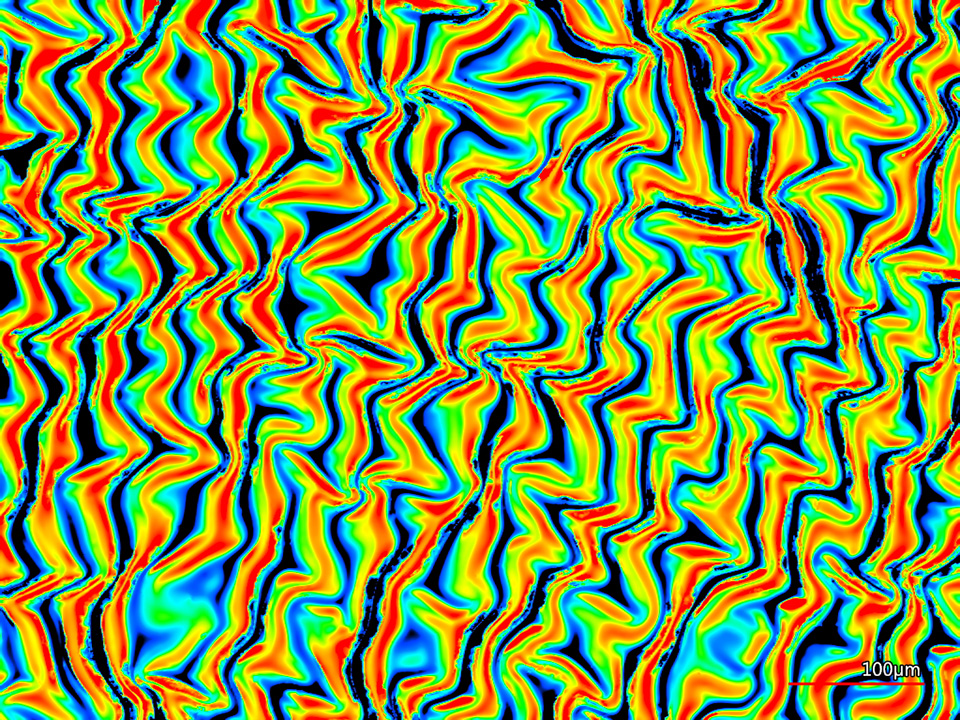
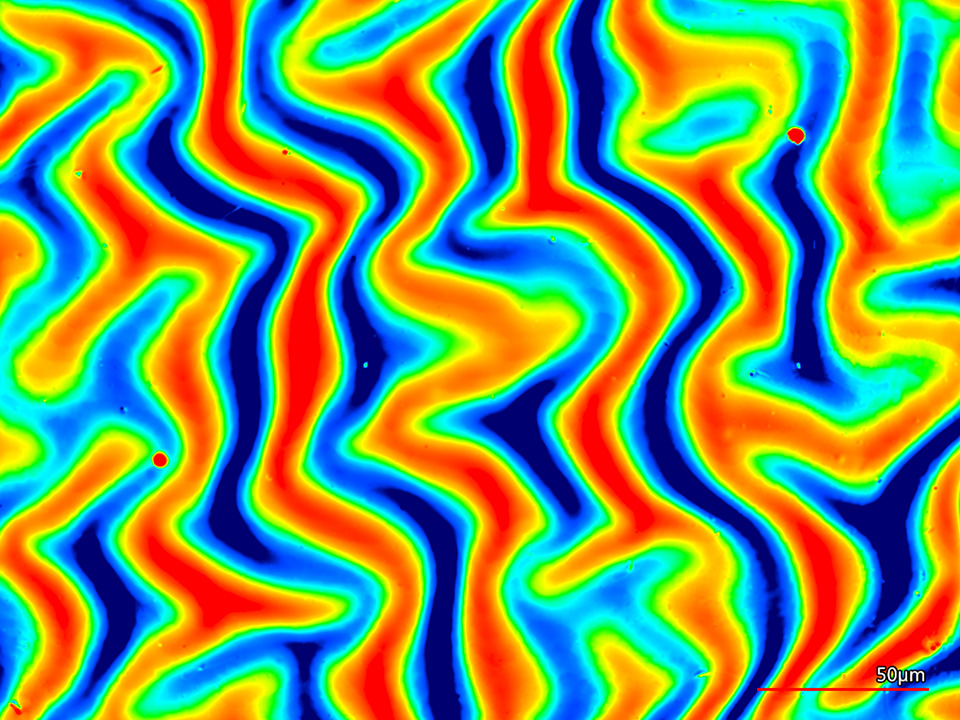
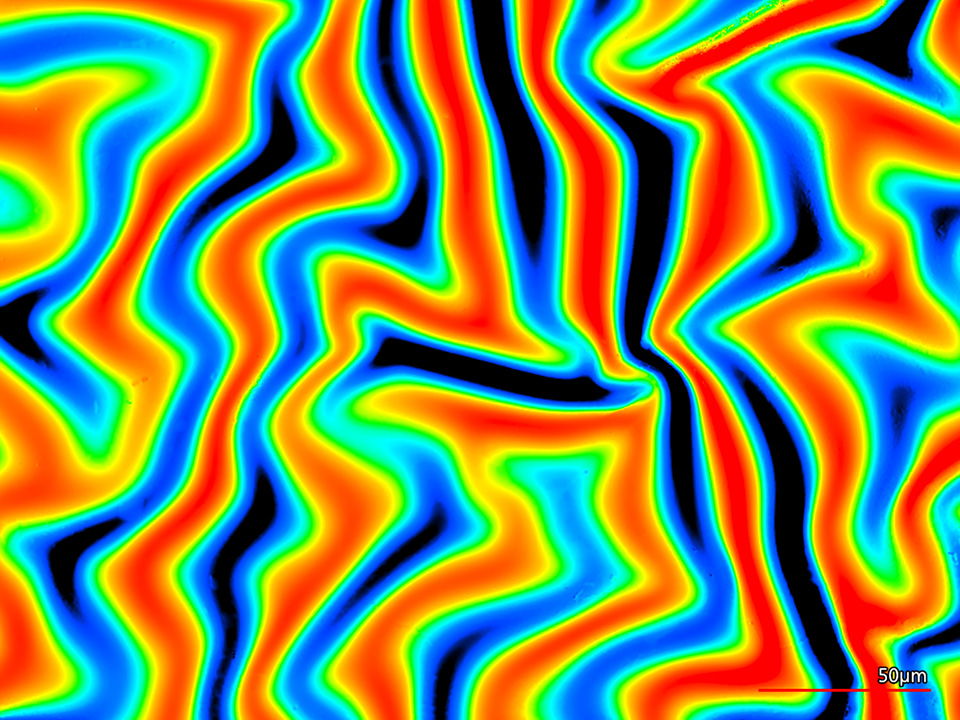
-
主題標籤

